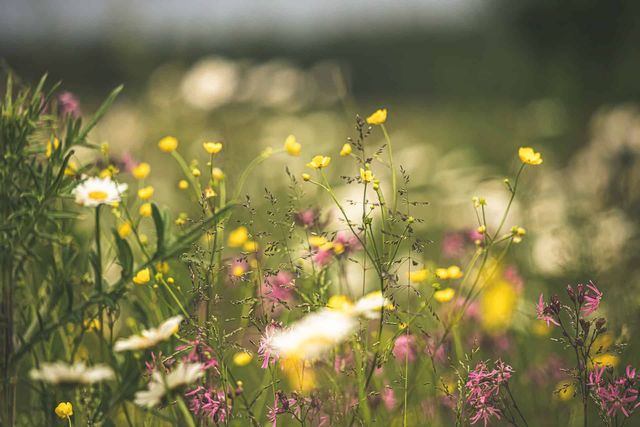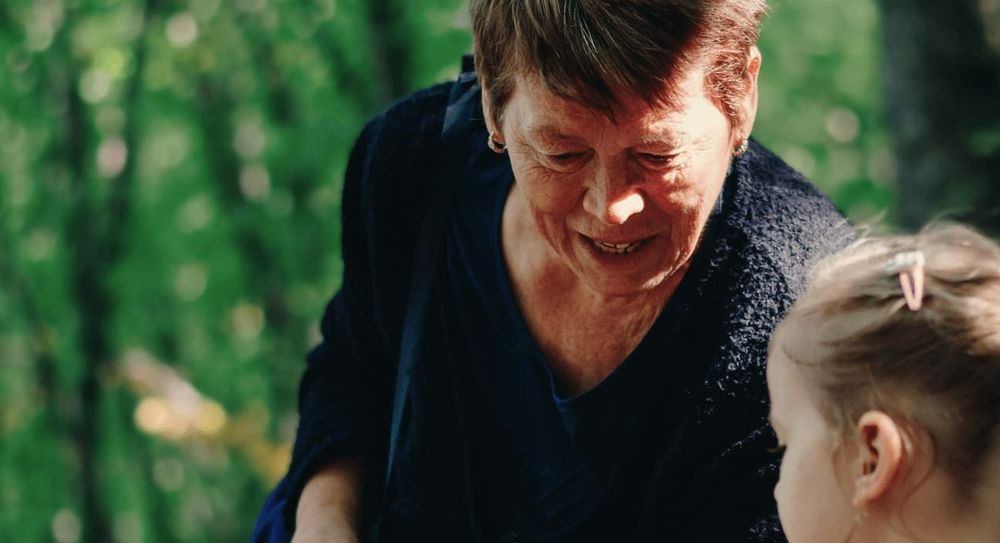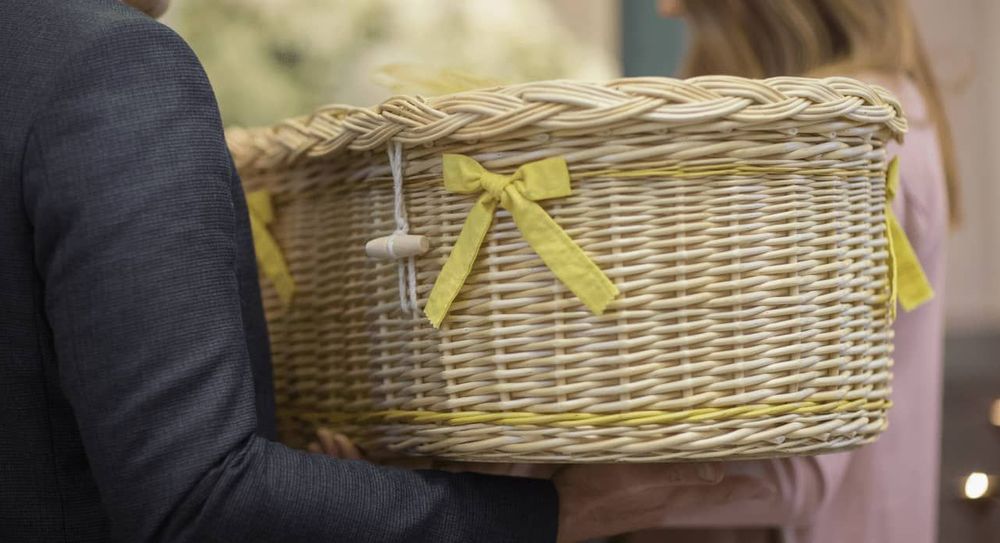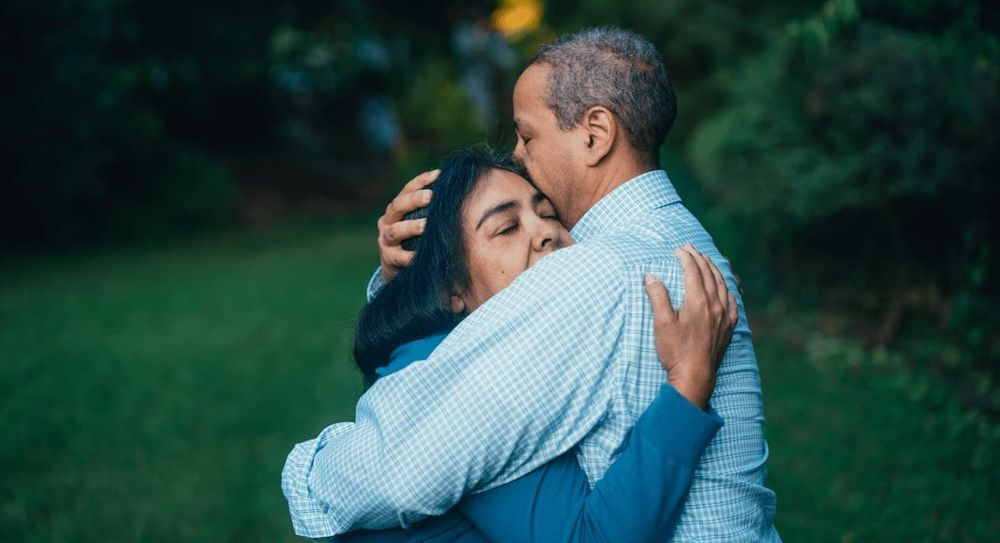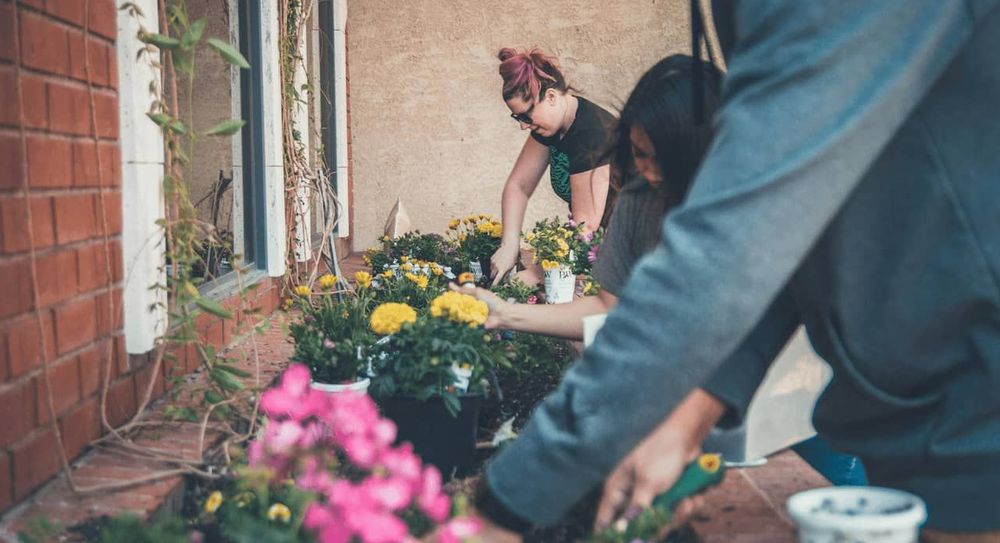Planning a funeral and thinking about a more environmentally friendly option? Find out more about natural burial, including what it means, how it works and what to expect from a natural burial site.
What is a natural burial?
A natural burial (sometimes known as a green burial) is when someone who dies is buried in a natural environment. This could be a green space like a wildflower meadow or it could be a woodland burial. The idea is that the body will return back to the earth in the most natural way possible and in the most eco-friendly way too. That way, a natural habitat is either created for wildlife or left as undisturbed as possible.
Natural burial is a term used to describe the burial of human remains where the burial area creates habitat for wildlife or preserves existing habitat which are rich in flora and fauna.
Is natural burial legal?
Yes. It’s legal as long as the owner of the burial site follows the rules set out by the government. The Association of Natural Burial Grounds (ANGB) also sets out their own code of conduct as guidelines for site owners to follow. Although this is not a legal requirement.
What is a natural burial ground like?
A natural burial ground is a natural environment such as a woodland, meadow or sustainable farmland where people can be buried in a more eco-friendly way. Each burial ground is different and won’t stand out like a traditional cemetery would. There are no permanent grave markers so you won’t see any headstones or other memorials left at graves. But the site owners keep co-ordinates of where the person is buried so that you can visit their grave when you like. Site owners also make sure that native plants and wildlife live undisturbed. So that means graves are not neatly mowed like traditional cemeteries. Instead the plants and trees are left to flourish.
Natural burial sites are usually owned privately or by a trust or charity. But you can sometimes find natural burial grounds in a section of a traditional cemetery that’s owned by a local council, as green burials are becoming more popular across the UK.
In a recent survey carried out by The Natural Burial Company “73% of respondents stated that they would prefer to use the services of a funeral company that worked to strong environmental standards” and a further “98% of respondents believed that funeral service providers should have information readily available regarding green products and services.”
Can you have a funeral service at a natural burial site?
Some natural burial sites may have a small hall or building where funeral ceremonies can take place. You can contact the owner of the natural or woodland burial site and ask them for more details about their venue. They may also be able to put you in touch with some local celebrants who could carry out the service for you. Or if you’d like a religious service you could either ask your local religious leader to attend, or to provide a service in your place of worship before the burial takes place.
Most natural burial site owners are flexible so you have the opportunity to tailor the service depending on what you’d like. But keep in mind that some natural burial sites only offer graveside services to keep the grounds as natural as they can.
What makes a natural or woodland burial more eco-friendly?
Here are some key things that make a natural burial a more environmentally friendly option:
- No embalming is needed so that chemicals don’t get into the grounds.
- More eco-friendly grave markers are used instead of permanent ones like headstones.
- Biodegradable coffins or a shroud can be used so that no unnatural materials from traditional coffins disturb the grounds.
- Only trees and plants native to the area should be planted.
- Plastic wrapped flowers should not be used.
Where a funeral precedes such burial, it would seek to minimise environmental impact by prohibiting embalming and, where a coffin is used, ensuring that this be made of natural, biodegradable materials.
What to expect from a natural burial site
Some natural burial sites have their own specific rules about memorials and planting trees to preserve the flora and fauna. Here’s what you can expect in more detail:
No permanent grave markers
To make sure the natural habitats of wildlife on the grounds aren’t disturbed there are usually no permanent grave markers allowed. This means no headstones are allowed. And it could also mean no plaques or benches at all. But some natural burial sites allow small wooden or stone plaques if they’ll break down over time and don’t interfere with the natural habitat. And you’ll also find that most site owners record co-ordinates of exactly where someone is buried so that they can be easily found when you want to visit them.
Check this with the owner when you get in touch to see what is and isn’t allowed. You may be comfortable with no grave marker at all especially if you’d like a natural burial to reduce your impact on the environment. Talking this through with family members may help too. Some may find it difficult not to see a grave marker when remembering a loved one who’s passed away.
A biodegradable coffin or shroud
The aim of a natural burial is to have as little impact on the environment as possible. Traditional burials with a coffin or casket tend to use chemicals and other materials that get into the soil and air. This could interfere with plants and other wildlife. So most natural burials sites ask for a biodegradable coffin or shroud to be used instead. Biodegradable coffins can be made from willow, seagrass, bamboo or recycled cardboard.
Rules for planting and flowers
Every site will have its own rules about whether planting trees is allowed or not. Some allow it and some only allow a certain type of plant that’s native to the area. This can be the same for flower arrangements. Or you might find that the owner of the site can recommend a florist who will make sure any flower arrangements are made entirely with biodegradable materials.
How much does natural burial cost?
The cost of a natural or woodland burial ranges from a few hundred pounds to thousands. This is because of a number of things like:
- The burial site you choose. As natural burial sites are privately owned they’ll all have their own price lists. And they’ll change from one site to another.
- The plot you choose on the site. Some woodland burial sites will be part of a larger natural burial site that also includes other burial plots in fields or wildflower meadows. Plots in different locations on the site may cost more or less depending on how difficult it is to prepare the plot.
- The length of lease on the burial plot. Some natural burial sites may offer an exclusive lease on a plot for 50 to 100 years. The longer the lease the more the plot could cost.
- What optional extras you choose. You could keep things simple with just the burial itself. Or you could choose to remember a loved one with a service, biodegradable flower arrangements, and a tree planted in their memory. Depending on what the burial site provides you may have to pay more for these services. So keep this in mind when arranging a funeral.
Keep in mind that these costs don’t include the funeral service or the funeral director’s fees if you use one to help you coordinate the service and burial. But it’s also worth knowing that, typically, a green funeral costs less than a traditional funeral. You can learn more about funeral costs here.
Natural burial FAQs
Here are some answers to common questions we get asked about natural burial you may find useful.
Does a body have any treatment for a natural burial?
Natural burials don’t allow embalming. This is because the chemicals can pollute the ground. So the body won’t be treated before the burial. Instead, a biodegradable coffin or shroud is used to limit the impact the burial has on the environment.
Do you have to use a funeral director?
No you don’t have to use a funeral director to organise a natural burial. Or any funeral at all, if you don’t want to. Talk to the natural burial site owner about your options to see if they can help. You might need to think about keeping your loved one’s body at home before the burial. Or, if you choose to get help from a funeral director, make sure they’re aware that embalming isn’t required.
Can you be cremated for natural burial?
The aim of natural burial is to reduce the impact burials have on the environment. Cremation uses fuel and causes air pollution. So it may not be the best option if you’d like a natural burial because you’re worried about the environment.
That’s not to say that you can’t be cremated and then have your ashes buried or scattered in a more natural setting. There are many organisations that will help you and your family plan this. And some natural burial sites offer this option too.
How are graves prepared at a natural burial site?
Typically, natural burial plots are dug by hand. Machinery isn’t used so that the land and natural habitats aren’t disturbed.
Can you have a memorial at a natural burial site?
Natural burial sites have varying rules on whether memorials can be used. Usually, any memorials made from unnatural materials won’t be allowed. This is because they may interfere with the natural habitats of wildlife. But some natural burial sites allow plaques and other memorials made from materials that naturally decay over time. You may find that some natural burial sites offer a more eco-friendly way of remembering a loved one, such as planting a memorial tree, scattering wildflower seeds, or placing a stone tablet that’s in keeping with the area.
Can you visit a natural burial site?
Yes. It’s best to check visiting times with the site that you choose. But most will allow people to visit graves at any time during daylight hours. A lot of natural burial sites also use a digital map of the grounds so that you can easily find a burial plot.
Can you leave flowers or ornaments on the grave?
Any flowers or ornaments left at graves is usually not encouraged at a natural burial site. This is because they can require maintenance and potentially interfere with the natural habitat. The idea of natural burial is to create or preserve the environment so the site owner might suggest something more environmentally-friendly like planting a tree or scattering seeds.
What to wear to a woodland burial?
If you’re organising a woodland burial for a loved one it’s up to you what guests wear. You could choose traditional black. Or you could ask guests to put on something colourful to celebrate the person’s life. Whatever you choose keep in mind the practicalities of a woodland burial. If you’re having a graveside service, for example, you might need to remind guests to bring suitable shoes and waterproof jackets. Ask the burial site owner what they think too. They should be able to tell you what other guests tend to wear or what they think may be appropriate.
Is a natural burial right for you?
Now you know more about natural burials you may find it’s the right option for you and your funeral plans. But here are just a few more things to consider before you make up your mind:
- Your nearest natural burial site may not be just around the corner. Would your family be okay with travelling a bit further to visit?
- Tell your family and friends that you’re thinking about a natural burial. How do they feel about it? Would they be happy if you didn’t have a permanent grave marker?
- Do you feel comfortable with the idea of not having a traditional coffin? Explore all your options when you contact a natural burial site to find what’s suitable for you.
Sources: A Guide to Natural Burial
Photo by Kristine Cinate on Unsplash.

